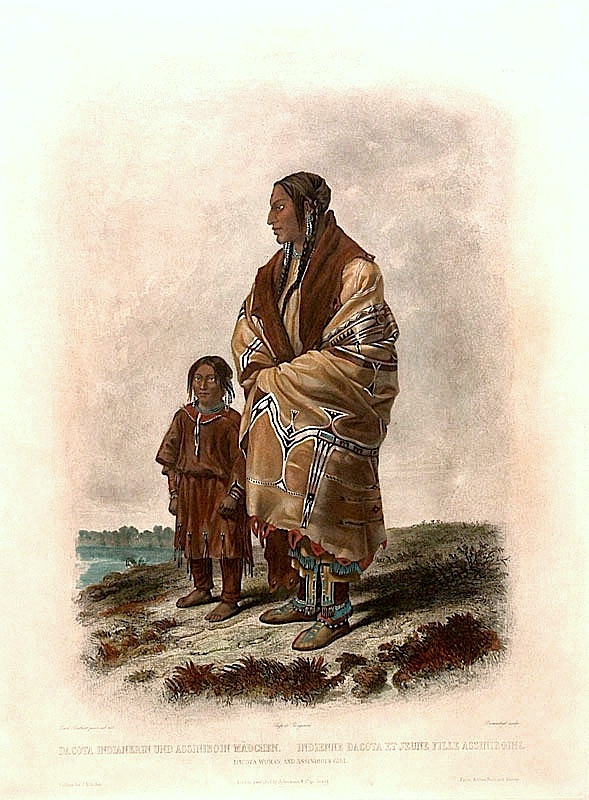
THE DAILY PIC: This “robe with box-and-border design”, as it’s known, is from the Linden-Museum in Stuttgart, which has loaned it to the show called “The Plains Indians: Artists of Earth and Sky” at the Metropolitan Museum in New York. I liked the object when I saw it, but it was another image, presented as an illustration in its label text, that made me realize how little I really understood the robe.
On June 1, 1833, the German artist Karl Bodmer depicted this very garment being worn by Chan-Ccha-Nia-Teuin, the Teton Sioux woman who originally owned it. (See the reproduction below.) Seeing it draped on her body, I realized that it was originally conceived as a three-dimensional object with a close connection to a named person’s body and presence, rather than as the flat, free-floating image that it becomes when our own picture- and art-obsessed culture takes it in. The robe itself depends on the flaying of an animal; once it gets flattened out in a vitrine, that feels like a second act of flaying, of a vanquished culture by its victors. (Image courtesy the Metropolitan Museum of Art, New York)
For a full survey of past Daily Pics visit